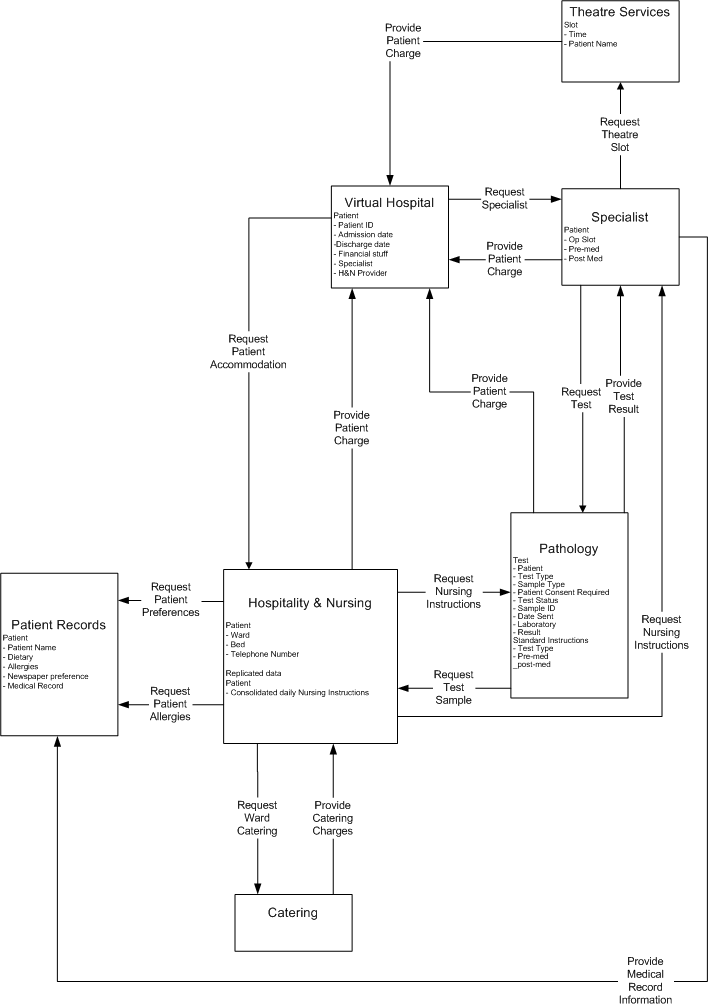SoaAreYouBeingServed
From SPA Wiki
SOA: Are You Being Served?
SPA2005 WS10, Tuesday 12 April, 1430-1730
1. Issues and Discussions
During the session a number of points of discussion arose. Here is a commentary on some of the main issues.
Issue: Is SOA going to provide better re-use?
- Claim: SOA will give better re-use than traditional (e.g., component based) architectures because services explicitly separate business process from “back-end” service processing. This decoupling allows agility in recombining services into new processes.
- Doubts: Good “traditional” architectural practice has aimed at this decoupling. This is not new.
- Comments: It is certainly true that this decoupling is not new, and SOA type architectures, built using technologies such as CORBA, have been around for at least 15 years and perhaps longer. It may be that the value of SOA is to make this practice more explicit, and develop technologies and standards (such as BPEL) that aim to make it easier.
Issue: Is SOA a “business” or a “technical” architecture?
- Claim: The greatest business benefit will come from treating SOA as a business architecture, rather than just a way of architecting technical solutions. This will allow new business models, based on aggregation of services from different suppliers. (This view is promoted by some more visionary commentators on SOA, such as Pat Helland of Microsoft with his “Metropolis” analogy and his idea of the “Service Oriented Enterprise”).
- Doubts: Most suppliers of SOA technologies are targeting the market for technical architecture solutions with products such as ESBs (Enterprise Service Bus).
- Comments: The term service is overloaded, and this is leading to confusion in the industry about what SOA really means. If SOA is treated as a purely technical architecture, it is hard to see how it is differentiated from EAI (Enterprise Application Integration). On the other hand, if SOA is really to be viewed as a business architecture it has to be understood and sponsored by the business, and not just IT. Most commentators on SOA take the view that a purely technical view of SOA will not deliver the potential business agility benefits.
Issue: Is SOA really only for B2B?
- Claim: B2B has been a domain where SOAs concepts have been pioneered and proved valuable. B2B requires that businesses expose services electronically as the basis for collaboration. In this context, SOA really is a business architecture.
- Doubts: The fact that SOA is great for B2B does not mean that it is universally applicable or valuable.
- Comments: B2B is certainly the natural SOA domain. Part of the confusion about what SOA means stems from the attempt to position it as a more general architectural concept.
Issue: How well is SOA supported by standards?
- Claim: There are around 50 SOA/WS standards either published or in the works.
- Doubts: The most sophisticated users probably only use 3 or 4 of these standards.
- Comments: The standards are generally immature. There are competing attempts from different consortia to generate standards in the same area, and many unsolved problems on how to use them together.
2. Attendee Views of SOA
At the end of the session, attendees were asked to try and sum up their view of SOA in a few words. The results, listed below, show some scepticism about whether SOA is really anything new and/or whether it is mature (is there a contradiction here?):
- A Way to Go
- Could be Interesting
- Not Much New
- Interesting Rehash
- Still A Bit Confused
- Terrifies Me
- Challenging Fee Earner
- CATALYSIS Rides Again!
- Flexible, Challenging, Overhyped
- Service Level Agreements
- Difficult in Practice
- Introduces new TLAs (Three Letter Acronyms)
- Be Aware!
- Good if Business Centric
- CORBA, but Slower
- Out of Service
- Insourcing Outsourcing
- Fashionable
- Same old hype
- Wait and See
- Seen this Before
11 of the 19 attendees expected to being doing something on SOA in the next 12 months!
3. A Possible SOA design for the Hospital
This diagram shows the possible “business services” for a hospital, and the main service messages that might be needed.
